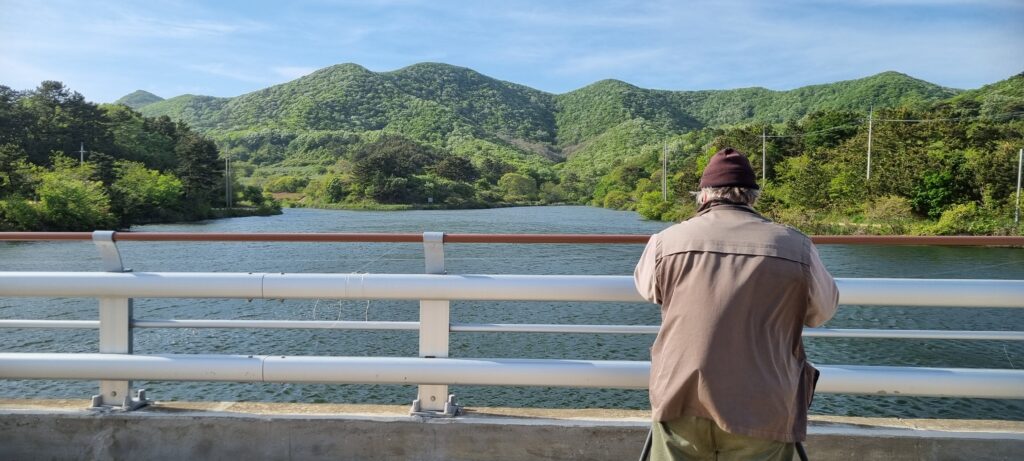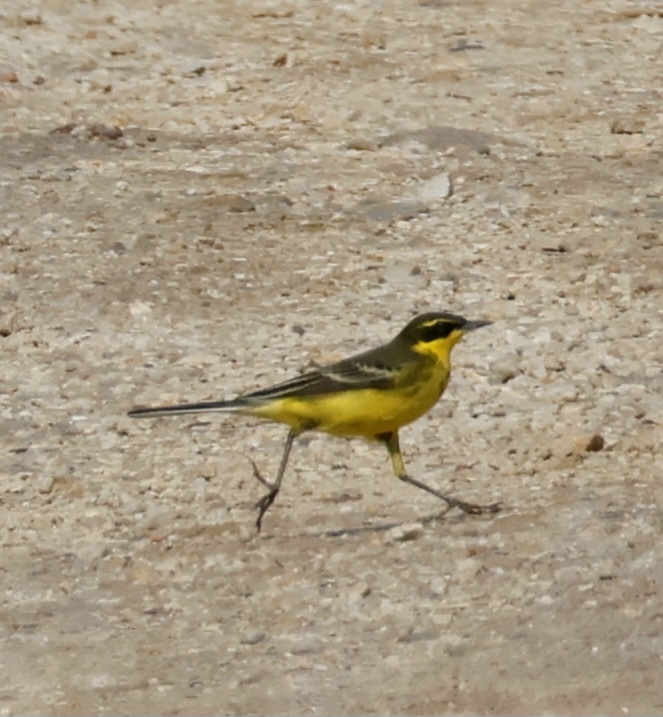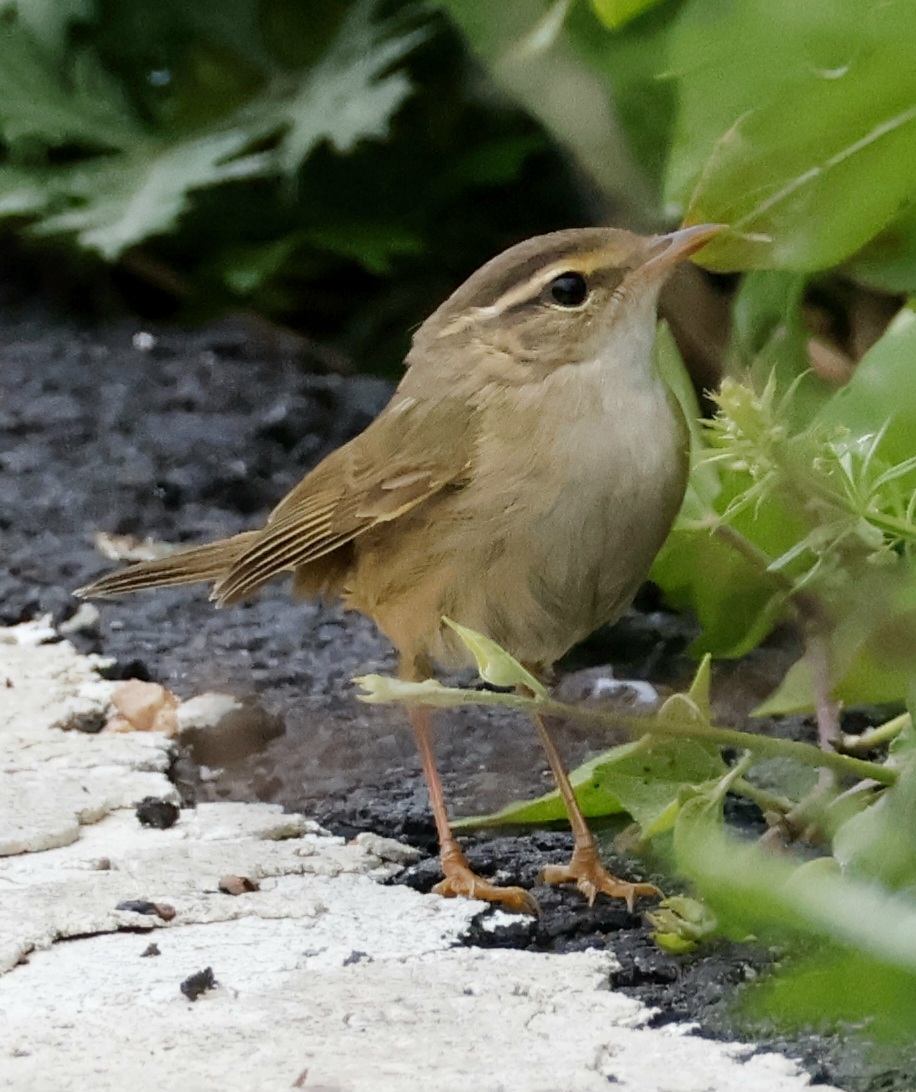John Kitcher, May 2024
I had the pleasure of spending a few days during the 2024 peak migration period in birding boot camp on Baengnyeongdo with Dr. Moores, Birds Korea’s Director. I say “boot camp” because I have only been birding for one year, and Dr. ‘Sergeant Major’ Moores had plenty of advice to offer to bring me up to speed, tips that I will share with you, dear reader.
The secret
“The reason I see more birds than other people,” confessed Dr. Moores to me on the first day, “is because I am quieter”. Such a simple but profound statement. Everywhere we went, we moved liked cats stalking our prey.
The walk
In the field you move slowly. You walk softly and as light footed as possible. When you reach for your binoculars, you s-l-o-w-l-y reach for them and s-l-o-w-l-y move them to your eyes. Your every action is being watched, and you must convince the birds that you are not a threat. When you see a bird you do not point! Birds are shy and do not want the attention. You do not talk needlessly, and if you must say something, you whisper.
The car
We drove almost everywhere with the windows down. We had several speeds: bird speed in bird-rich locations and in the rice fields (5 kph), ‘pressing-on’ speed for when we had to be somewhere but didn’t want to upset the birds (15 kph), and main road speed for when there was some traffic but also the possibility of some interesting birds (25 kph). By going at bird speed, Dr. Moores was able to identify by call/song more birds than I can count.
Identification: Structure, contrast, then plumage, including color
Structure: When we look at a bird, the first thing to do is determine their structure. Is the bird large or small, long-billed or short-billed, or built (for its species group or family) like a fridge or like a ballerina? Flycatchers are a good example. The Asian Brown Flycatcher is dainty and graceful looking while the Grey-Streaked Flycatcher is more robust and powerful looking. Also, look at how the bird moves and behaves because of their structure. A Pacific Swift is smaller and moves differently to a White-throated Needletail.



Contrast: Which points on the birds are high contrasting and which birds show little contrast ? Looking at this sparrow-sized bird, can you tell what the species is by looking just at contrasts?

Can you guess what it is? Perhaps a Manchurian Bush Warbler? [Dr Moores: “Yes…Korean Bush Warbler as we usually call this species – long-tailed, thin-billed, with a very pale throat, a vaguely paler belly and darker flanks, and a white supercilium above a dark eye-stripe…”)
Plumage & Colour: Lastly, look at the colours and details of the plumage. We do this last of all because the light can be difficult, colours can be hard to see properly and remember, and the brain can fill in the blanks, and add in colour that wasn’t even there/make you recall something you didn’t see, while forgetting all the other details.
Habitats: Wetlands
Wetlands are very attractive to birds. Driving at bird speed past wetlands we were on full alert for sandpipers. Wood Sandpipers tend to be in rice-fields in which there are lots of insects (look for dragonflies etc). Their calls also tend to attract other species, which also attract yet more birds. If there are Wood Sandpipers in a field, there is a better chance of finding other species. We saw a huge flock of Wood Sandpipers (278) during a rainy spell. And nearby was a Ruddy Turnstone, two Sharp-tailed Sandpipers, several Richard’s Pipits, and a lone, soggy Blyth’s Pipit.



Sentience
Birds are sentient and think. When you drive up to a junction in an unknown town, you have to stop and decide which way to go: left or right? A bird too will stop at a natural junction (such as where a river splits or an island ends) and spend time deciding his or her next step.
Now, imagine you are a bird and have just flown 180 km from China over the Yellow Sea from the Shandong peninsula in 3 or 4 hours and just seen land. What would you do? You are 1 km up, the tailwinds are strong, the sun is shining, and visibility is great. Why stop? You don’t. You keep on flying to North Korea because when the sun shines, make hay.
Now imagine you are flying over the sea and you get caught in rain. The wind becomes turbulent, visibility plunges, and you don’t know how much longer you can go on. You are exhausted! You see an island. You drop!

Bird numbers tend to accumulate during bad weather and fall away during good weather for migration.
Another thing, bird species don’t all fly at the same speed. At the start of an arrival phase, egrets and shorebirds tend to arrive first, followed by slightly weaker flyers such as chats and flycatchers. The birds arrive and depart in waves.
I know there are many Birds Korea supporters out there. I hope that we can meet up from time to time to help build the community spirit, and put on trips for beginner birders to help set their field-craft in the right direction and ensure Bird Korea’s continuation.
Thank you again Dr. Moores for teaching me so much.

Other exciting birds seen on the trip…










